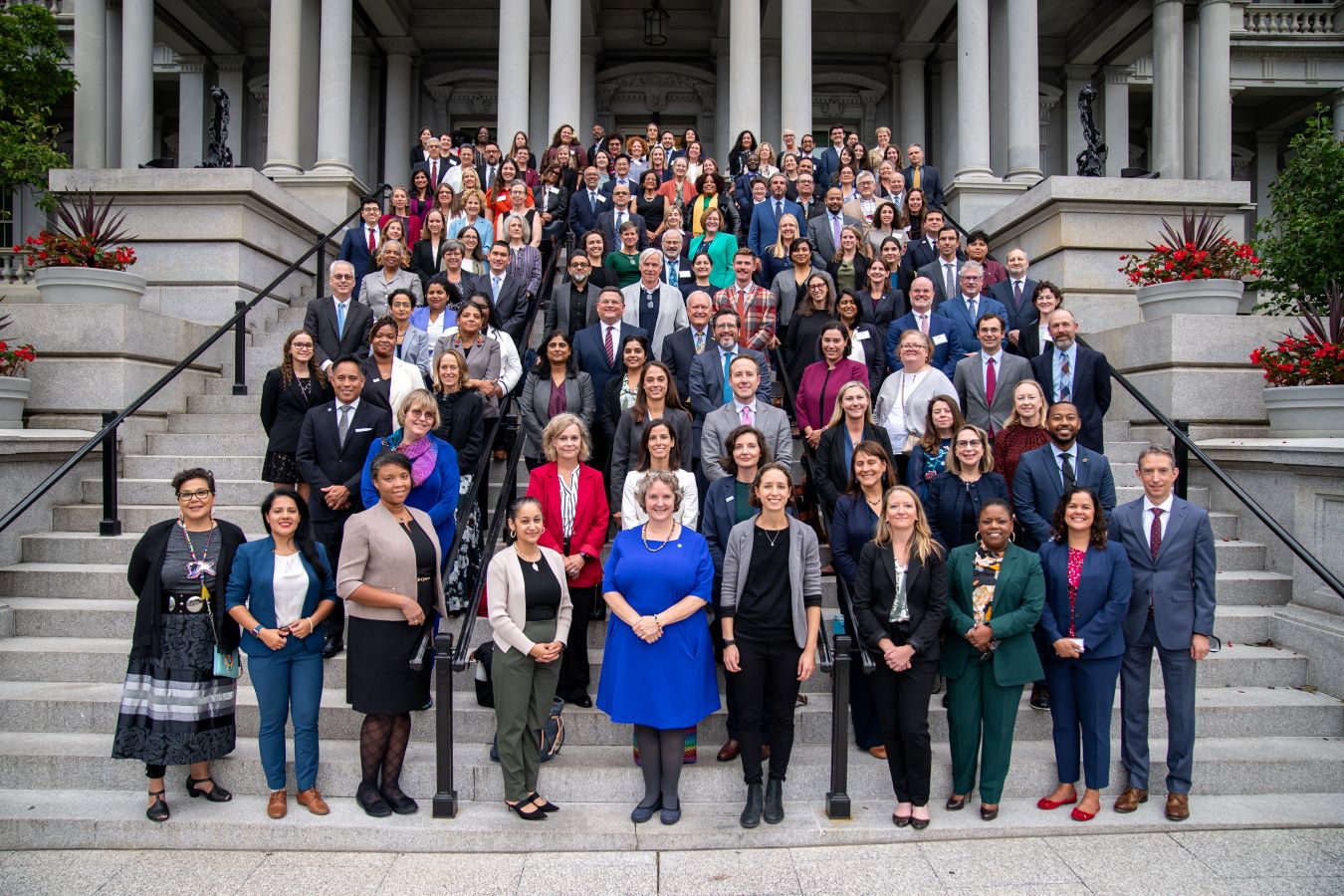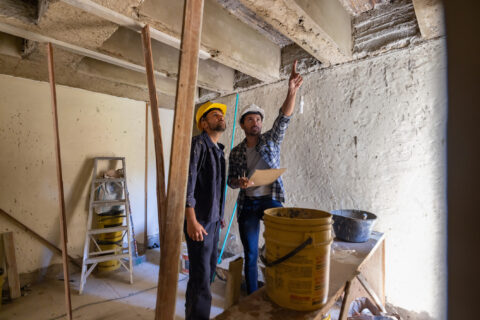In September 2023, the White House hosted the first-ever Summit on Building Climate Resilient Communities. This was a milestone toward building a more climate-resilient nation together. The National League of Cities joined representatives from local governments and resilience leaders across the country to start a dialogue and knit together the work and leadership taking place to be greater than the sum of our parts.
While this Summit brought together leaders across government scales, municipal leadership on climate action was a central narrative throughout the day’s events. The Summit highlighted how municipal leaders are on the front lines of protecting their residents and communities from extreme weather events. For example, Madison, WI, Mayor Satya Rhodes-Conway represented city leaders throughout the Summit. Madison is a leader in municipal climate action; look at some some of the ways Madison is taking climate action. During the welcome and opening remarks, Mayor Rhodes-Conway said, “I have seen Climate Mayors, my colleagues, do this work all across the country to keep their communities safe. And we know that there is no time to lose.”
“I have seen Climate Mayors, my colleagues, do this work all across the country to keep their communities safe. And we know that there is no time to lose.”
Madison, WI Mayor Satya Rhodes-Conway
It was also clear that climate resilience in the built environment requires local leadership. NLC participated in a roundtable on building climate resilience in the built environment. The conversation highlighted the critical role of land use planning in building a climate-resilient future and ensuring that the future is socially just. For example, land use planning, a tool specifically designed for local leadership and discretion, plays a critical role in ensuring the siting of critical infrastructure in communities out of disaster-prone zones. Land use planning also ensures all residents in a community, not just the wealthy or privileged, have access to homes and essential services as part of creating a resilient community.
The National Climate Resilience Framework
In conjunction with the Summit, the Biden Administration released a National Climate Resilience Framework (PDF). The National Climate Resilience Framework (“the Framework”) emphasizes that “building a climate-resilient nation will require an all-hands-on-deck effort across all levels of government (State, local, Tribal, and territorial), leaders of all political backgrounds, and the wide range of philanthropic, non-profit, academic, and private sector institutions” [page 5]. The Framework grounds itself in several core principles including: Proactive, Whole-System, Equitable and Just, People-Centered, Collaborative and Inclusive, and Durable [page 7].
There are six objectives in the Framework, and local leaders play a critical role in ensuring the success of each piece of the puzzle of a climate resilient nation. For example, objective 1 is to “Embed climate resilience into planning and management.” Local leaders can implement this objective by taking an all-of-government approach to climate resilience. By considering climate as a lens across the core function of city management – from capital improvement projects to comprehensive planning – cities are building communities that will not only survive but also thrive in the face of climate change. (Read a full list of opportunities for local action on page 9.)
“Building a climate-resilient nation will require an all-hands-on-deck effort across all levels of government“
The National Climate Resilience Framework
The Framework highlights local leadership in implementing objective 2 “Increase resilience of the built environment to both acute climate shocks and chronic stressors.” It highlighted a local case study:
“Many local government partners are overhauling zoning ordinances to integrate resilience while reducing barriers to adequate housing supply. For example, in Norfolk, Virginia, a new zoning ordinance requires all new development within the city to meet a resilience quotient.
This requirement is measured on a points system covering three separate resilience elements:
- risk reduction,
- stormwater management, and
- energy resilience.
At the same time, the ordinance encourages development in higher elevation areas to ensure housing supply needs are met. This type of local leadership is essential and should be supported across the Nation. In addition, built environment investments and design should support and leverage the resilience of the natural environment (see Objective 5). Land use planning substantially affects ecosystems and natural resources within and around communities. Facilitating infill development, building conversion, and redevelopment as viable alternatives to green field development are approaches that communities are taking to reimagine their built environments to achieve community goals and plan for long-term climate impacts. Leveraging investments in nature-based solutions and coordinating siting and design of buildings and infrastructure are essential to ensuring that the built and natural environments work together to support climate-resilient communities.” [page 12]
Throughout the first-ever White House Summit on Building Climate Resilient Communities, municipal climate leadership was both highlighted and celebrated. It was also abundantly clear that cities, towns and villages will continue to lead the way to a climate-resilient nation and future for all to enjoy. A federal partner is key to success. Learn more about the work that the National League of Cities is doing to support cities, towns and villages in building climate resilience communities.









